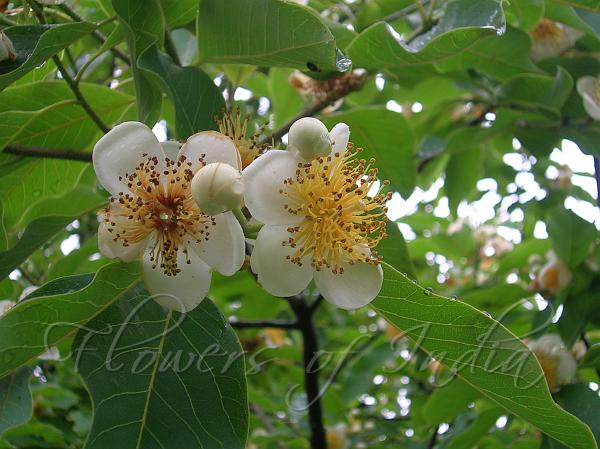|
| Schima |
|

|

| File size | 985756 |
| Original date | 5/20/07 7:49 AM |
| Resolution | 2048 x 1536 |
| Flash | Flash did not fire, auto |
| Focal length | 8.0mm |
| Exposure time | 1/98s |
| Aperture | 3.2 |
| Focus Distance | |
| Metering Mode | Partial |
| Camera make | NIKON |
| Camera model | E3700 |
| Sensor type |
|
|
|
Photo: |
Botanical name: Schima wallichii Family: Theaceae (tea family)
Schima is a medium evergreen tree up to 35 m tall. However, in most places
it may be seen only 40 ft high.
The stem is cylindrical, branchless for up to 25 m, diameter up to 1 m,
with a steep buttresses rarely up to 1.8 m high; bark surface ruggedly cracked
into small, thick, angular pieces, red-brown to dark grey; inner bark with
skin-irritating fibres, bright red in colour. Leathery leaves are
elliptic-oblong in shape and look somewhat like Champa (Michelia)
leaves. Leaf margins are entire or slightly toothed. Flowers white, fragrant,
3-4 cm across. Sepals rounded. Five white petals are broadly ovate and rounded. There is a dense bunch of orange-yellow stamens in the center. The flowers resemble those of Sultan Champa and
Nag Kesar.
The genus name is derived from the Greek word
skiasma (shadow), probably referring to the dense crown.
Schima grows in moist
and dry evergreen as well as in mixed deciduous forests.
Schima has a fast growth even under infertile soil conditions. Flowering
is in April-May and fruiting is in February-March.
The main value of Schima is its hard and durable timber.
Schima timber is used for fence posts and beams and boards
for house construction. Schima wood is little used for fuel
because the bark causes irritation.
| Identification credit: Huirem Bhabini | Photographed in Ukhrul, Manipur. |
• Is this flower misidentified? If yes,